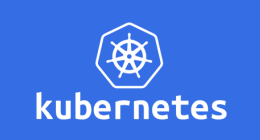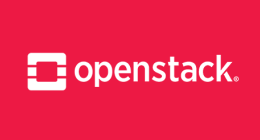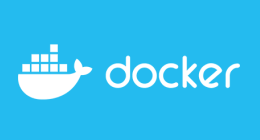Cet article est la partie 3 de la serie "Kubernetes deep dive" :
- Kubernetes on AWS with kube-aws
- Kubernetes : Torus, a cloud native distributed file system
- Kubernetes : Ingress Controller with Træfɪk and Let's Encrypt
- Kubernetes : Træfɪk and Let's Encrypt at scale


Still with the alpha/beta features but not that much (it's been here since v1.1), this week we'll focus on the Ingress resource that makes publishing services a lot easier. First we'll see what Ingress and Ingress Controller are then we'll demo with an awesome cloud native reverse proxy that implements the Ingress feature. To stay swag, we'll throw in automatic and on the fly Let's Encrypt certificates generation, because it tastes better when it is free.
Before we start you can check out Romain's article (for the moment it's only available in French) which describe what Træfɪk is, and how it works with Docker.
Kubernetes Object
Ingress Resource
An ingress is a relativly simple object that define a set of applicative routes. Those rules will allow the configuration of a reverse proxy in front of Kubernetes services.
Without ingress, Kubernetes services are directly exposed :
internet
|
------------
[ Services ]
Ingress happens between the Internet and Kubernetes services :
internet
|
[ Ingress ]
--|-----|--
[ Services ]
How do we define ingress rules :
---
apiVersion: extensions/v1beta1
kind: Ingress
metadata:
name: bobox
annotations:
kubernetes.io/ingress.class: "traefik"
spec:
rules:
- host: seedbox.archifleks.net
http:
paths:
- backend:
serviceName: h5ai
servicePort: 80
- host: tv.archifleks.net
http:
paths:
- backend:
serviceName: sickrage
servicePort: 8081
- host: torrents.archifleks.net
http:
paths:
- backend:
serviceName: rtorrent-internal
servicePort: 80
- host: movies.archifleks.net
http:
paths:
- backend:
serviceName: couchpotato
servicePort: 5050
In the above example, we define virtual hosts, which are each routed to different backend. Each backend must have a Kubernetes service defined to ensure TCP/UDP load balancing to the correct set of PODs via kube-proxy.
Ok so we have a YAML file, with a bunch of rules, but how do we use them ?
To do so we have to use an Ingress Controller, it is not directly into Kubernetes but rely on external components that implements the ingress controller specs
Ingress Controller
Alone, ingress definitions don't do much. To be applied, they need an ingress controller : a reverse proxy that's plugged into Kubernetes API, watches for creation/update/deletion of ingress rules, and configures itself accordingly.
A controller does the following :
- Poll Kubernetes API
- Apply configuration base on template
- Reload service
Google offers its own controller on GCE/GKE but there are others available based on multiples OSS that evolve to support Kubernetes :
Let's Træfɪk and Let's Encrypt
What is Træfɪk ?
Træfɪk is a reverse proxy and load-balancer designed for micro services (e.g. Containers). It is very simple, written in Go, and supports a lot backend types : Consul, Etcd, Docker, Kubernetes, Mesos, etc. It can also be backed by a classic static configuration file and a mix of the above to act as a classic reverse proxy.
In addition, Træfɪk supports the ACME protocol used by Let's Encrypt. We are able to publish services and to support TLS automaticly and for free (and that's Cloud (automaticly, not free) !
Træfɪk configuration for Kubernetes
First, we need to deploy the ingress controller with a Deployment :
---
apiVersion: extensions/v1beta1
kind: Deployment
metadata:
name: traefik-ingress-controller
labels:
k8s-app: traefik-ingress-lb
spec:
replicas: 1
revisionHistoryLimit: 0
template:
metadata:
labels:
k8s-app: traefik-ingress-lb
name: traefik-ingress-lb
spec:
terminationGracePeriodSeconds: 60
volumes:
- name: config
configMap:
name: traefik-conf
- name: acme
hostPath:
path: /srv/configs/acme.json
containers:
- image: containous/traefik:experimental
name: traefik-ingress-lb
imagePullPolicy: Always
volumeMounts:
- mountPath: "/config"
name: "config"
- mountPath: "/acme/acme.json"
name: "acme"
ports:
- containerPort: 80
hostPort: 80
- containerPort: 443
hostPort: 443
- containerPort: 8080
args:
- --configfile=/config/traefik.toml
- --web
- --kubernetes
- --logLevel=DEBUG
We'are using experimental Træfɪk image because it includes the latest commits for Kubernetes and also for the HTTP Auth basic and digest that have not yet been merged into stable. To store Let's Encrypt certificates, we need to use a volume otherwise they will be regenerated every time the pod reboots. Let's encrypt has a 20 certificates per week rate limit so be careful :)
I'm using an HostPath for the demo but you can use whatever volume type suits your configuration.
The container is supposed to listen to 80 and 443 via the hostPort directive, which is pretty much the same as doing a docker -p 80:80 -p 443:443 but without NAT. If you are using Kubernetes with CNI as a network plugin, the hostPort directive is ignored and the container does not use the host network. A workaround is to use a NodePort or ExternalIP service.
I don't know what you think about but it is a neat solution compare to using HostPort, especially in a cluster when you can use multiple Træfɪk instances and a Cloud Load Balancer (e.g on AWS).
Optional, a service in front of Træfɪk :
---
apiVersion: v1
kind: Service
metadata:
name: traefik
labels:
k8s-app: traefik-ingress-lb
spec:
selector:
k8s-app: traefik-ingress-lb
ports:
- port: 80
name: http
- port: 443
name: https
externalIPs:
- 178.32.28.59
In my scenario, I have got only one node so I'm using an externalIP, all traffic to port 80 and 443 will be redirected to Træfɪk pod.
Still optional, it is possible to define a service to make Træfɪk webui accessible (it will be accessible from the outside and also published via Traefik and an ingress rule) :
---
apiVersion: v1
kind: Service
metadata:
name: traefik-console
labels:
k8s-app: traefik-ingress-lb
spec:
selector:
k8s-app: traefik-ingress-lb
ports:
- port: 8080
name: webui
Finally and the most important, we define a configmap containing Træfɪk configuration :
apiVersion: v1
kind: ConfigMap
metadata:
name: traefik-conf
data:
traefik.toml: |
# traefik.toml
defaultEntryPoints = ["http","https"]
[entryPoints]
[entryPoints.http]
address = ":80"
[entryPoints.http.redirect]
entryPoint = "https"
[entryPoints.https.auth.basic]
users = ["klefevre:$apr1$k2qslCn6$0OgA8vhnyC8nJ99YfJMOM/"]
[entryPoints.https]
address = ":443"
[entryPoints.https.tls]
[acme]
email = "lefevre.kevin@gmail.com"
storageFile = "/acme/acme.json"
entryPoint = "https"
onDemand = true
onHostRule = true
caServer = "https://acme-staging.api.letsencrypt.org/directory"
[[acme.domains]]
main = "archifleks.net"
We define entrypoints : http and https and a redirection between from http to https via [entryPoints.http.redirect]. It's possible to add authentication via [entryPoints.https.auth.basic]. For the moment, it is inly possible at the entrypoint level and not on a per backend basis.
Then for Let's Encrypt configuration :
email = "lefevre.kevin@gmail.com": usernamestorageFile = "/acme/acme.json": certificates storage file (it is also possible to use a KV store to share certificates between Træfɪk instances)entryPoint = "https": entrypoint whre ACME is enabledonDemand = true: enable on the fly generationonHostRule = true: enable generation based on backend discoverycaServer = "https://acme-staging.api.letsencrypt.org/directory": uses staging api, to go to production, comment or remove this line[[acme.domains]]main = "archifleks.net": Authorized domain
Domain validation is done via DNS, it's important to have a record pointing to the Træfɪk node or to the load-balancer in front of the service (via cloud provider). In my case, I have a record * IN A A.B.C.D for archifleks.net.
Once all these files are ready, it's possible to merge them all in a single YAML or to pass each of them to Kubernetes. The files used for this article are available on Github
Full traefik.yml file :
---
apiVersion: v1
kind: Service
metadata:
name: traefik
labels:
k8s-app: traefik-ingress-lb
spec:
selector:
k8s-app: traefik-ingress-lb
ports:
- port: 80
name: http
- port: 443
name: https
externalIPs:
- 178.32.28.59
---
apiVersion: v1
kind: Service
metadata:
name: traefik-console
labels:
k8s-app: traefik-ingress-lb
spec:
selector:
k8s-app: traefik-ingress-lb
ports:
- port: 8080
name: webui
---
apiVersion: v1
kind: ConfigMap
metadata:
name: traefik-conf
data:
traefik.toml: |
# traefik.toml
defaultEntryPoints = ["http","https"]
[entryPoints]
[entryPoints.http]
address = ":80"
[entryPoints.http.redirect]
entryPoint = "https"
[entryPoints.http.auth.basic]
users = ["klefevre:$apr1$k2qslCn6$0OgA8vhnyC8nJ99YfJMOM/"]
[entryPoints.https.auth.basic]
users = ["klefevre:$apr1$k2qslCn6$0OgA8vhnyC8nJ99YfJMOM/"]
[entryPoints.https]
address = ":443"
[entryPoints.https.tls]
[acme]
email = "lefevre.kevin@gmail.com"
storageFile = "/acme/acme.json"
entryPoint = "https"
onDemand = true
onHostRule = true
caServer = "https://acme-staging.api.letsencrypt.org/directory"
[[acme.domains]]
main = "archifleks.net"
---
apiVersion: extensions/v1beta1
kind: Deployment
metadata:
name: traefik-ingress-controller
labels:
k8s-app: traefik-ingress-lb
spec:
replicas: 1
revisionHistoryLimit: 0
template:
metadata:
labels:
k8s-app: traefik-ingress-lb
name: traefik-ingress-lb
spec:
terminationGracePeriodSeconds: 60
volumes:
- name: config
configMap:
name: traefik-conf
- name: acme
hostPath:
path: /srv/configs/acme/acme.json
containers:
- image: containous/traefik:experimental
name: traefik-ingress-lb
imagePullPolicy: Always
volumeMounts:
- mountPath: "/config"
name: "config"
- mountPath: "/acme/acme.json"
name: "acme"
ports:
- containerPort: 80
hostPort: 80
- containerPort: 443
hostPort: 443
- containerPort: 8080
args:
- --configfile=/config/traefik.toml
- --web
- --kubernetes
- --logLevel=DEBUG
Demo
On the cluster, we got the following pods :
kubectl get pods
NAME READY STATUS RESTARTS AGE
couchpotato-1954888086-ehrc3 1/1 Running 1 21d
h5ai-3742736394-idw66 1/1 Running 1 16d
plex-3026742140-9lifq 1/1 Running 1 2d
rtorrent-3337740403-un4rr 1/1 Running 1 10d
sickrage-3769118260-h5c78 1/1 Running 7 21d
First we deploy the traefik.yml previously created :
kubectl create -f traefik.yml
service "traefik" created
service "traefik-console" created
configmap "traefik-conf" created
deployment "traefik-ingress-controller" created
kubectl get pods
NAME READY STATUS RESTARTS AGE
couchpotato-1954888086-ehrc3 1/1 Running 1 21d
h5ai-3742736394-idw66 1/1 Running 1 16d
plex-3026742140-9lifq 1/1 Running 1 2d
rtorrent-3337740403-un4rr 1/1 Running 1 10d
sickrage-3769118260-h5c78 1/1 Running 7 21d
traefik-ingress-controller-379161919-3lhff 1/1 Running 0 51s
Træfɪk startup logs :
time="2016-09-29T13:54:54Z" level=info msg="Preparing server https &{Network: Address::443 TLS:0xc42030ac00 Redirect:<nil> Auth:0xc4203f6df0}"
time="2016-09-29T13:54:54Z" level=debug msg="Generating default certificate..."
time="2016-09-29T13:54:55Z" level=info msg="Generating ACME Account..."
time="2016-09-29T13:54:58Z" level=info msg="Retrieving ACME certificates..."
time="2016-09-29T13:54:58Z" level=debug msg="Loading ACME certificates [archifleks.net]..."
time="2016-09-29T13:54:58Z" level=info msg="Preparing server http &{Network: Address::80 TLS:<nil> Redirect:0xc4203d2e70 Auth:0xc4203f6da0}"
time="2016-09-29T13:54:58Z" level=debug msg="Kubernetes CA cert: /var/run/secrets/kubernetes.io/serviceaccount/ca.crt"
time="2016-09-29T13:54:58Z" level=debug msg="Using environment provided kubernetes endpoint"
time="2016-09-29T13:54:58Z" level=debug msg="Kubernetes endpoint: https://10.3.0.1:443"
time="2016-09-29T13:54:58Z" level=debug msg="Using label selector: ''"
time="2016-09-29T13:54:58Z" level=debug msg="Configuration received from provider kubernetes: {}"
time="2016-09-29T13:54:58Z" level=debug msg="Last kubernetes config received more than 2s, OK"
time="2016-09-29T13:55:00Z" level=info msg="Retrieved ACME certificates"
time="2016-09-29T13:55:00Z" level=debug msg="Testing certificate renew..."
Communication with Let's Encrypt servers is OK but no certificate is generated, only a user. We can check the acme.json file to be sure :
cat acme.json
{
"Email": "lefevre.kevin@gmail.com",
"Registration": {
"body": {
"resource": "reg",
"id": 359553,
"key": {
},
"contact": [
"mailto:lefevre.kevin@gmail.com"
],
"agreement": "https://letsencrypt.org/documents/LE-SA-v1.1.1-August-1-2016.pdf"
},
"uri": "https://acme-staging.api.letsencrypt.org/acme/reg/359553",
"new_authzr_uri": "https://acme-staging.api.letsencrypt.org/acme/new-authz",
"terms_of_service": "https://letsencrypt.org/documents/LE-SA-v1.1.1-August-1-2016.pdf"
},
"DomainsCertificate": {
"Certs": []
}
For now, Træfɪk is not serving any backend, to do so we must define ingress rules with ingress.yml :
kubectl create -f ingress.yml
ingress "seedbox" configured
ingress "traefik" configured
ingress "kubernetes-dashboard" configured
Træfɪk logs:
time="2016-09-29T14:05:51Z" level=debug msg="Waited for kubernetes config, OK"
time="2016-09-29T14:05:51Z" level=debug msg="Creating frontend kubernetes.archifleks.net"
time="2016-09-29T14:05:51Z" level=debug msg="Wiring frontend kubernetes.archifleks.net to entryPoint http"
time="2016-09-29T14:05:51Z" level=debug msg="Creating route kubernetes.archifleks.net Host:kubernetes.archifleks.net"
time="2016-09-29T14:05:51Z" level=debug msg="Creating entryPoint redirect http -> https : ^(?:https?:\\/\\/)?([\\da-z\\.-]+)(?::\\d+)?(.*)$ -> https://$1:443$2"
time="2016-09-29T14:05:51Z" level=debug msg="Wiring frontend kubernetes.archifleks.net to entryPoint https"
time="2016-09-29T14:05:51Z" level=debug msg="Creating route kubernetes.archifleks.net Host:kubernetes.archifleks.net"
time="2016-09-29T14:05:51Z" level=debug msg="Creating backend kubernetes.archifleks.net"
time="2016-09-29T14:05:51Z" level=debug msg="Creating load-balancer wrr"
time="2016-09-29T14:05:51Z" level=debug msg="Creating server kubernetes-dashboard-600072875-fb17t at http://10.2.80.4:9090 with weight 1"
time="2016-09-29T14:05:51Z" level=debug msg="Creating frontend movies.archifleks.net"
time="2016-09-29T14:05:51Z" level=debug msg="Wiring frontend movies.archifleks.net to entryPoint http"
time="2016-09-29T14:05:51Z" level=debug msg="Creating route movies.archifleks.net Host:movies.archifleks.net"
time="2016-09-29T14:05:51Z" level=debug msg="Wiring frontend movies.archifleks.net to entryPoint https"
time="2016-09-29T14:05:51Z" level=debug msg="Creating route movies.archifleks.net Host:movies.archifleks.net"
time="2016-09-29T14:05:51Z" level=debug msg="Creating backend movies.archifleks.net"
time="2016-09-29T14:05:51Z" level=debug msg="Creating load-balancer wrr"
time="2016-09-29T14:05:51Z" level=debug msg="Creating server couchpotato-1954888086-ehrc3 at http://10.2.80.6:5050 with weight 1"
time="2016-09-29T14:05:51Z" level=debug msg="Creating frontend seedbox.archifleks.net"
time="2016-09-29T14:05:51Z" level=debug msg="Wiring frontend seedbox.archifleks.net to entryPoint http"
time="2016-09-29T14:05:51Z" level=debug msg="Creating route seedbox.archifleks.net Host:seedbox.archifleks.net"
time="2016-09-29T14:05:51Z" level=debug msg="Wiring frontend seedbox.archifleks.net to entryPoint https"
time="2016-09-29T14:05:51Z" level=debug msg="Creating route seedbox.archifleks.net Host:seedbox.archifleks.net"
time="2016-09-29T14:05:51Z" level=debug msg="Creating backend seedbox.archifleks.net"
time="2016-09-29T14:05:51Z" level=debug msg="Creating load-balancer wrr"
time="2016-09-29T14:05:51Z" level=debug msg="Creating server h5ai-3742736394-idw66 at http://10.2.80.7:80 with weight 1"
time="2016-09-29T14:05:51Z" level=debug msg="Creating frontend torrents.archifleks.net"
time="2016-09-29T14:05:51Z" level=debug msg="Wiring frontend torrents.archifleks.net to entryPoint http"
time="2016-09-29T14:05:51Z" level=debug msg="Creating route torrents.archifleks.net Host:torrents.archifleks.net"
time="2016-09-29T14:05:51Z" level=debug msg="Wiring frontend torrents.archifleks.net to entryPoint https"
time="2016-09-29T14:05:51Z" level=debug msg="Creating route torrents.archifleks.net Host:torrents.archifleks.net"
time="2016-09-29T14:05:51Z" level=debug msg="Creating backend torrents.archifleks.net"
time="2016-09-29T14:05:51Z" level=debug msg="Creating load-balancer wrr"
time="2016-09-29T14:05:51Z" level=debug msg="Creating server rtorrent-3337740403-un4rr at http://10.2.80.3:80 with weight 1"
time="2016-09-29T14:05:51Z" level=debug msg="Creating frontend traefik.archifleks.net"
time="2016-09-29T14:05:51Z" level=debug msg="Wiring frontend traefik.archifleks.net to entryPoint http"
time="2016-09-29T14:05:51Z" level=debug msg="Creating route traefik.archifleks.net Host:traefik.archifleks.net"
time="2016-09-29T14:05:51Z" level=debug msg="Wiring frontend traefik.archifleks.net to entryPoint https"
time="2016-09-29T14:05:51Z" level=debug msg="Creating route traefik.archifleks.net Host:traefik.archifleks.net"
time="2016-09-29T14:05:51Z" level=debug msg="Creating backend traefik.archifleks.net"
time="2016-09-29T14:05:51Z" level=debug msg="Creating load-balancer wrr"
time="2016-09-29T14:05:51Z" level=debug msg="Creating server traefik-ingress-controller-379161919-1f3wy at http://10.2.80.32:8080 with weight 1"
time="2016-09-29T14:05:51Z" level=debug msg="Creating frontend tv.archifleks.net"
time="2016-09-29T14:05:51Z" level=debug msg="Wiring frontend tv.archifleks.net to entryPoint http"
time="2016-09-29T14:05:51Z" level=debug msg="Creating route tv.archifleks.net Host:tv.archifleks.net"
time="2016-09-29T14:05:51Z" level=debug msg="Wiring frontend tv.archifleks.net to entryPoint https"
time="2016-09-29T14:05:51Z" level=debug msg="Creating route tv.archifleks.net Host:tv.archifleks.net"
time="2016-09-29T14:05:51Z" level=debug msg="Creating backend tv.archifleks.net"
time="2016-09-29T14:05:51Z" level=debug msg="Creating load-balancer wrr"
time="2016-09-29T14:05:51Z" level=debug msg="Creating server sickrage-3769118260-h5c78 at http://10.2.80.9:8081 with weight 1"
time="2016-09-29T14:05:51Z" level=info msg="Server configuration reloaded on :443"
time="2016-09-29T14:05:51Z" level=info msg="Server configuration reloaded on :80"
time="2016-09-29T14:05:51Z" level=debug msg="Loading ACME certificates [movies.archifleks.net]..."
time="2016-09-29T14:05:51Z" level=debug msg="Loading ACME certificates [traefik.archifleks.net]..."
time="2016-09-29T14:05:51Z" level=debug msg="Loading ACME certificates [tv.archifleks.net]..."
time="2016-09-29T14:05:51Z" level=debug msg="Loading ACME certificates [torrents.archifleks.net]..."
time="2016-09-29T14:05:51Z" level=debug msg="Loading ACME certificates [kubernetes.archifleks.net]..."
time="2016-09-29T14:05:51Z" level=debug msg="Loading ACME certificates [seedbox.archifleks.net]..."
time="2016-09-29T14:05:59Z" level=debug msg="Loaded ACME certificates [movies.archifleks.net]"
time="2016-09-29T14:05:59Z" level=debug msg="Got certificate for domains [movies.archifleks.net]"
time="2016-09-29T14:06:04Z" level=debug msg="Loaded ACME certificates [seedbox.archifleks.net]"
time="2016-09-29T14:06:04Z" level=debug msg="Got certificate for domains [seedbox.archifleks.net]"
time="2016-09-29T14:06:06Z" level=debug msg="Loaded ACME certificates [tv.archifleks.net]"
time="2016-09-29T14:06:06Z" level=debug msg="Got certificate for domains [tv.archifleks.net]"
time="2016-09-29T14:06:09Z" level=debug msg="Loaded ACME certificates [torrents.archifleks.net]"
time="2016-09-29T14:06:09Z" level=debug msg="Got certificate for domains [torrents.archifleks.net]"
time="2016-09-29T14:06:09Z" level=debug msg="Using label selector: ''"
time="2016-09-29T14:06:10Z" level=debug msg="Loaded ACME certificates [seedbox.archifleks.net]"
time="2016-09-29T14:06:10Z" level=debug msg="Got certificate for domains [seedbox.archifleks.net]"
......
We can see 2 things : - Backends are created on ingress rules detection - Certificates generation is done after backend addition to the pool
Connectivity check :
http tv.archifleks.net
HTTP/1.1 302 Found
Content-Length: 5
Content-Type: text/plain; charset=utf-8
Date: Thu, 29 Sep 2016 14:17:08 GMT
Location: https://tv.archifleks.net:443/
Found
http --verify=no --auth user:pass https://tv.archifleks.net -v
GET / HTTP/1.1
Accept: */*
Accept-Encoding: gzip, deflate
Authorization: Basic a2xlZmV2cmU6a2xvOTh6c2Q=
Connection: keep-alive
Host: tv.archifleks.net
User-Agent: HTTPie/0.9.4
HTTP/1.1 302 Found
Content-Length: 0
Content-Type: text/html; charset=UTF-8
Date: Thu, 29 Sep 2016 14:22:00 GMT
Location: /login/?next=%2F
Server: TornadoServer/4.2.1
Vary: Accept-Encoding
Ok, for the demo I had to use insecure mode because of the staging API, truth be told, I messed up with volumes the first time and reach the rate limit so I could not generate any more certificates :)
Conclusion
Ingress feature really does simplify application depoyment on Kubernetes. It adds another abstraction layer on top of a complex feature, especially in the container world, where time to live is very low and reverse proxies have to be dynamic.
There are few ingress controller for now, Google is pushing its but it is only available on GCE. Another community maintained is the Nginx but it does not natively support Kubernetes and/or Let's Encrypt where Træfɪk does.
Even if very few options are available in Træfɪk, there is a strong community and features are coming up quickly. Træfɪk already supports multiple backends such as Kubernetes, Mesos, Consul but also Let's Encrypt as we saw.
About Kubernetes, the project is becoming more and more pluggable, with a high abstraction level, and rapidly evolving. For exemple with FlexVolume and Dynamic Provisioning, which allow custom storage solutions to interface with kubernetes without touching core Kubernetes code. It is the same thing with ingress controller where (in addition to OSS solution) allow editor to publish software comatible with Kubernetes and the ingress feature.
Kevin Lefevre - @ArchiFleKs
Découvrez les derniers articles d'alter way



